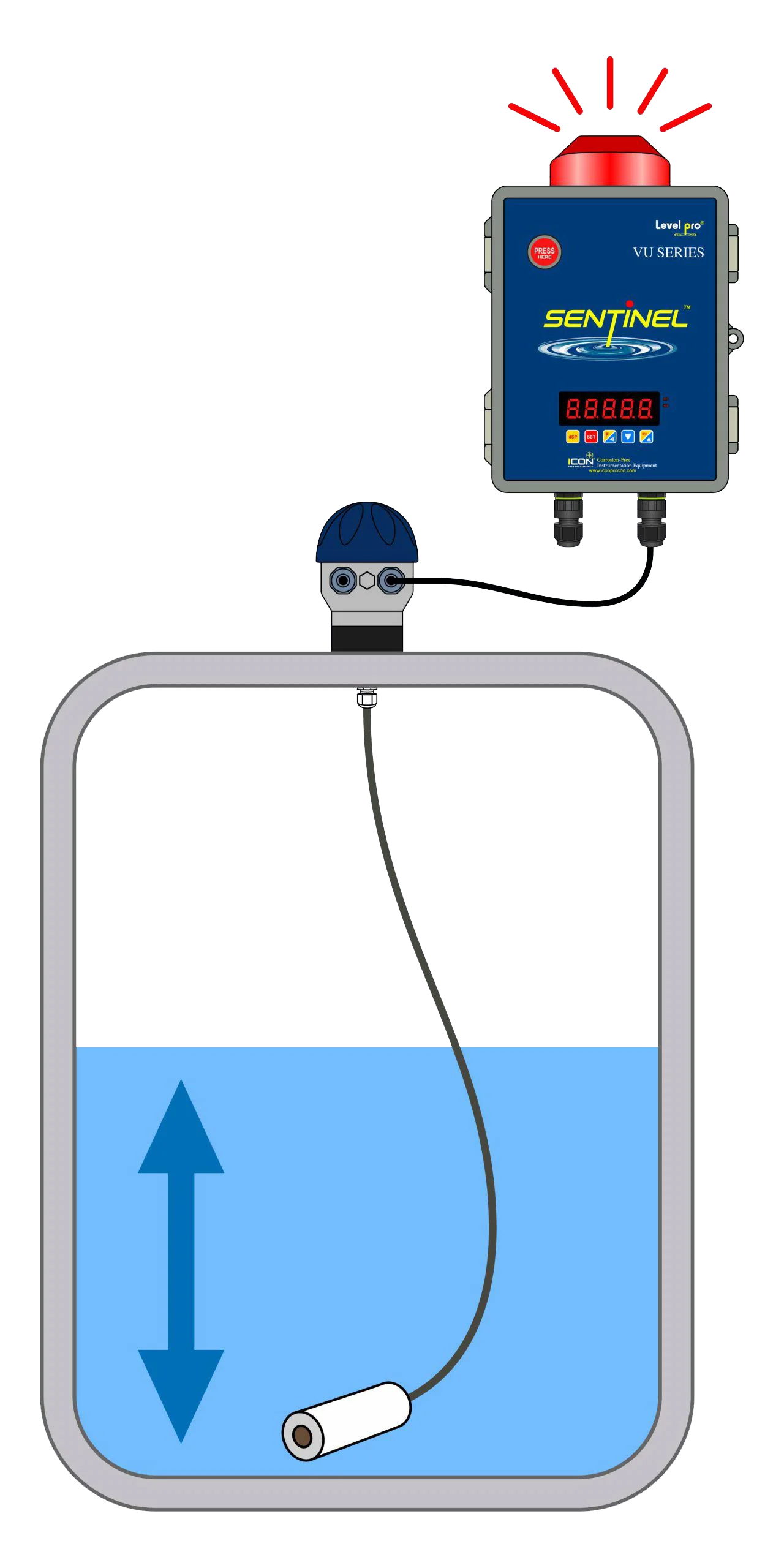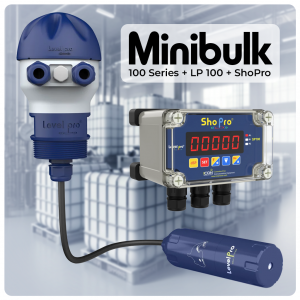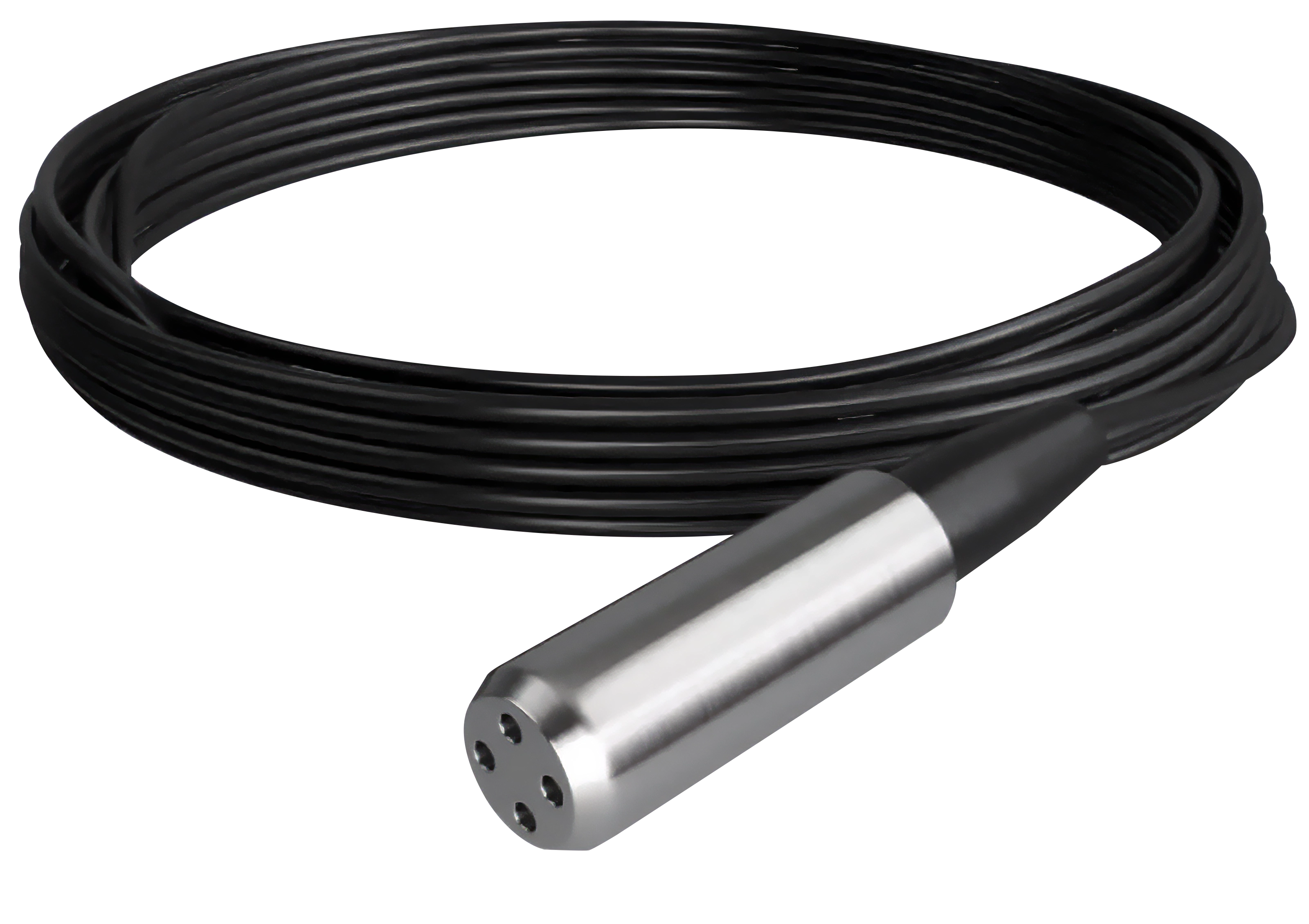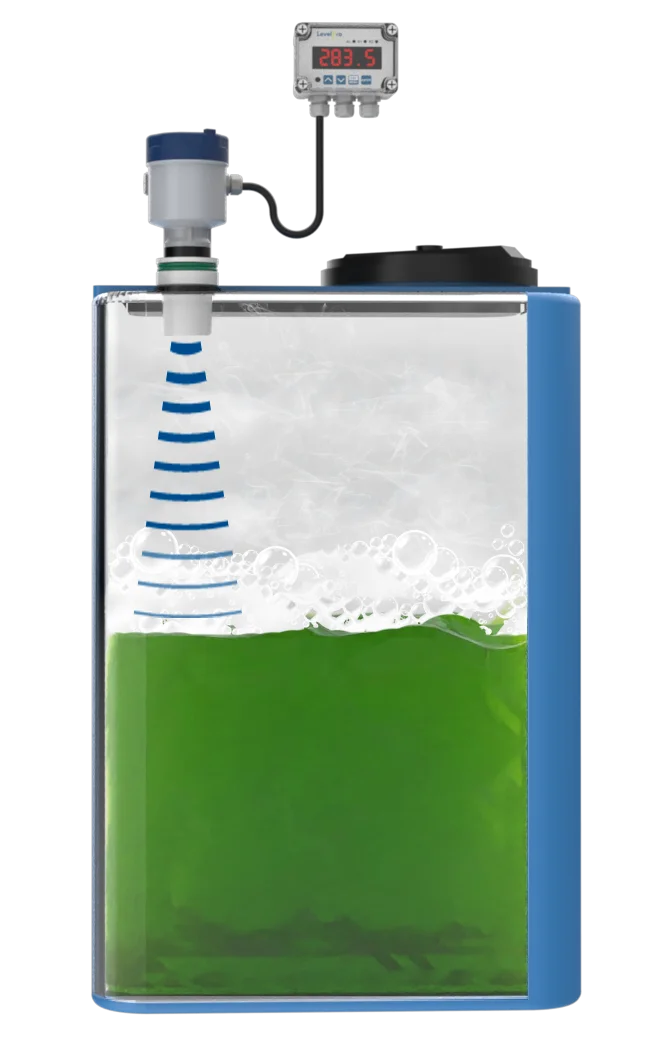How Do I Check the Liquid Level in My Tank?

Checking the liquid level in a tank can be done in several ways, depending on the type of tank and the liquid being stored. Some of the most common methods include:
- Using a submersible level sensor with a Local Display: (see picture) This sensor is placed directly into the liquid inside the tank. It works by measuring the hydrostatic pressure of the liquid in the tank. This change in pressure can be used to indicate the level of liquid in the tank.
- Using a dipstick or measuring tape: This is a simple and inexpensive way to check the liquid level in a tank. A dipstick or measuring tape is inserted into the tank, and the level of liquid is read from the markings on the dipstick or tape.
- Using a float gauge: This is a common method for checking the liquid level in tanks that store liquids with low viscosity. A float gauge consists of a float that is connected to a rod or cable. As the level of liquid in the tank changes, the float moves up or down, indicating the level of liquid in the tank.
- Using a sight glass indicator: This is a visual method for checking the liquid level in tanks. A sight glass indicator consists of a transparent tube or pipe that is inserted into the tank. The level of liquid in the tank can be determined by looking at the liquid level inside the sight glass.
- Using an ultrasonic level sensor: This is a non-contact method for checking the liquid level in tanks. An ultrasonic sensor emits sound waves that travel to the surface of the liquid and are reflected back to the sensor. The sensor then measures the time it takes for the sound waves to travel to and from the surface of the liquid, which is used to calculate the level of liquid in the tank.
- Using a capacitance or conductivity level sensor: These sensors use two electrodes to measure the capacitance or conductivity of the liquid between them. As the level of liquid in the tank changes, the capacitance or conductivity between the electrodes changes, indicating the level of liquid in the tank.
When checking the liquid level in a tank, it is important to follow any safety precautions and guidelines provided by the manufacturer. It’s also important to ensure that the method you choose is accurate and suitable for the specific liquid and tank you have.
Learn more about level sensors
Please contact us to discuss your application


